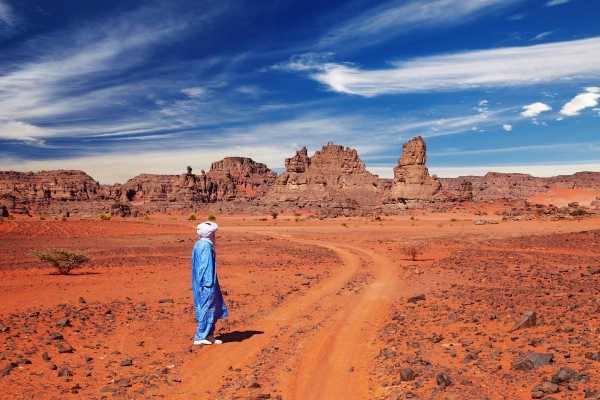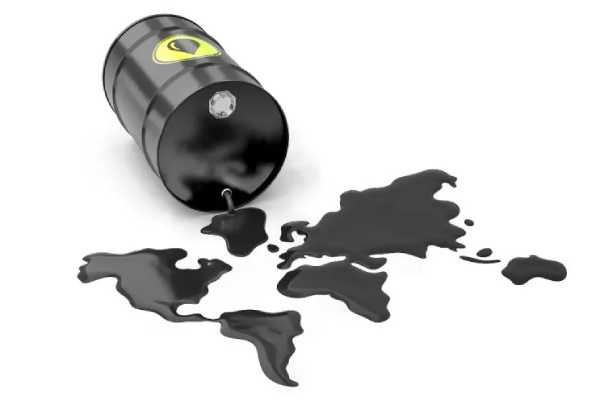The Importance of Saharan Dust to Earth
Responsible for producing more than 400 tons of dust per year, the great African desert plays an essential role for global biology, as dust from the Sahara contributes to Earth’s climate issue.
The immense Sahara Desert has an extensive area of 9.2 million km², larger than the territory of some countries, such as Brazil and Australia; and about the same size as the United States.
It is also the largest hot desert on the planet, present in several countries: Algeria, Chad, Egypt, Libya, Mali, Morocco, Mauritania, Niger, Tunisia, Sudan, Ethiopia, Djibouti and Somalia – in the last three, the desert receives local names.

This contribution, however, is not a mere detail, since the Sahara desert is the world’s main contributor when it comes to atmospheric dust. Produced largely by natural sources, the dust travels to Scandinavia, Japan or the Amazon, where it performs its environmental function.
Furthermore, the desert is the natural element that subdivides Africa into the Mediterranean (to the south) and Sub-Saharan (to the north) areas.
Due to its extension, the Sahara is divided into three regions: Western Sahara, Ahaggar Mountains and Tibesti Massif. Contrary to popular belief, the large sand dunes represent only a part of the desert, with rocky and infertile areas predominating.
What is Sahara dust?
The current characteristics of the Sahara are dominated by very rare rain and wind. The wind, in turn, is the main factor that reduces rocks into increasingly smaller pieces until they form tiny dust particles. Thus, initially, Saharan dust is mineral dust formed by the wind – atmospheric aerosol produced by the suspension of minerals in the soil.
Because they are very small and light particles, dust is easily carried by the wind. However, dust is also transported through the air: firstly through lower areas (depressions) and when it accumulates, it is taken to the sky by the wind.
Ultimately, the loose sediment is lifted and transported away from the desert. Therefore, it is a “task” of a geological and chemical nature that is only possible thanks to the wind.
The wind is so important that the dust ends when the air circulation ends. But thanks to the seasonal effect, dust from the Sahara manages to reach its destination: from winter storms and early spring, desert dust usually ends up in the Amazon; summer storms tend to bring dust to Africa, the Caribbean, and even parts of the United States such as Florida or Texas). Furthermore, the dust can also spread to Europe, Japan and even Hawaii.
Importance of Saharan dust at a global level
The biggest source of dust in the world’s air is certainly the Sahara. It (the dust) reaches significant altitudes in the atmosphere, causing high-level winds to carry the plumes across the globe. This transport can be done during all seasons of the year due to storms that spread dust everywhere.
It is understandable that Saharan dust is related to some disorders and risks when it comes to human health, such as asthma, lung diseases and even respiratory infections. However, dust doesn’t just make people have more difficulty breathing, it plays a fundamental role in the Earth’s climate and biology, as it acts as a fertilizer.
Thus, one of the main missions of Saharan dust is the transfer of nutrients from one place to another: the iron present in desert dust is an important contributor to the Atlantic Ocean and the Mediterranean Sea, with more than 70% of the iron Available to photosynthesizers (microalgae) in the Atlantic comes from Saharan dust.
Read Also: The 10 Most Protected People In The World
Another great contribution and non-obvious relationship between one of the hottest places on the planet and the majestic Amazon is that dust from the Sahara is extremely important for the forest due to the high concentration of phosphorus, which is scarce in the forest due to the constant rain.
Therefore, the Amazon forest depends on this dust as fertilizer. Furthermore, Saharan dust is essential for several ecosystems.





![The 10 Best Colleges In California [New Ranking]](https://naijaxtreme.com/wp-content/uploads/2022/10/best-colleges-in-california-img_71615-min.jpeg)

